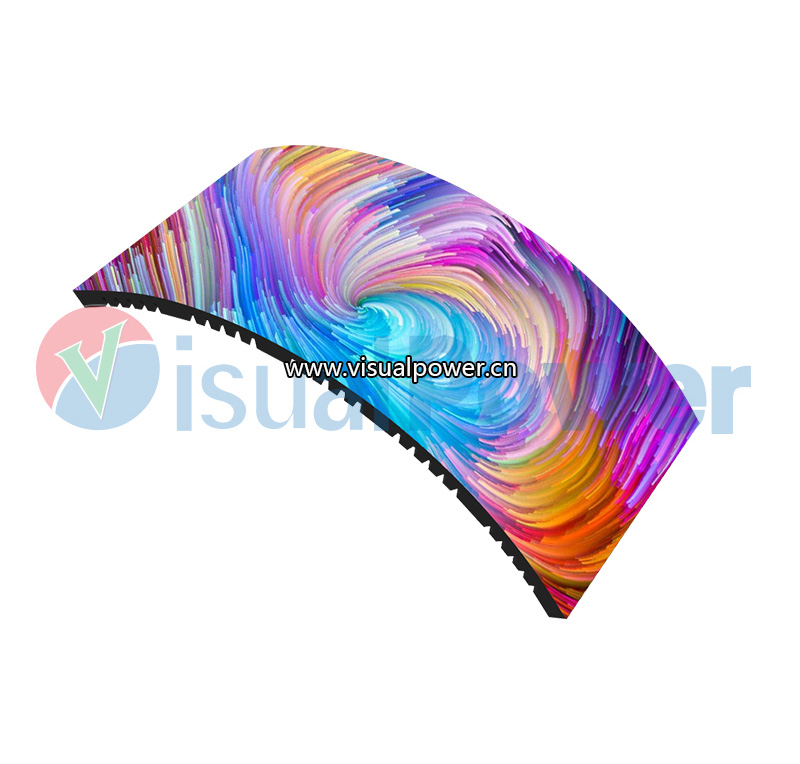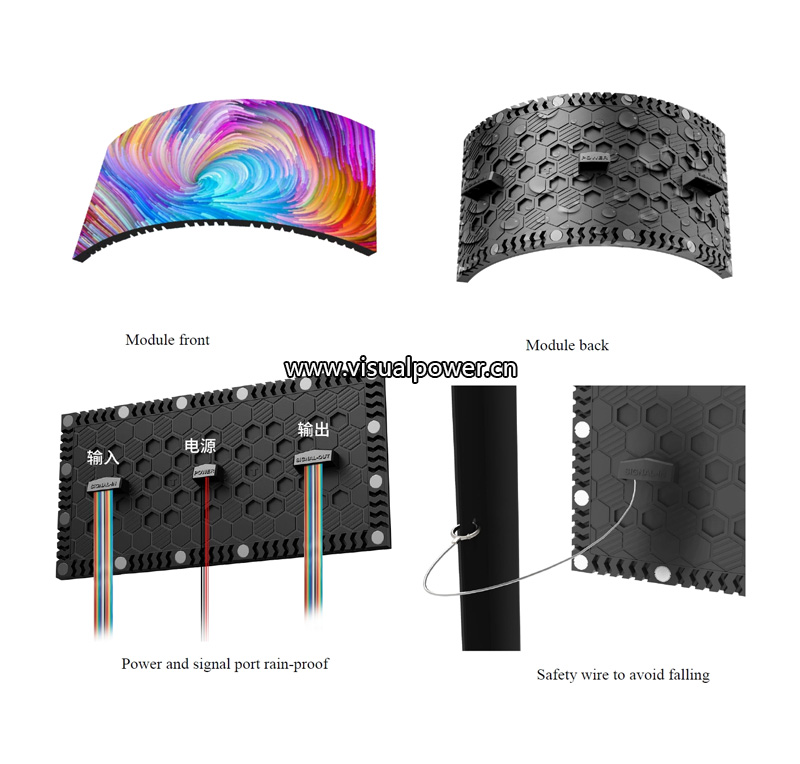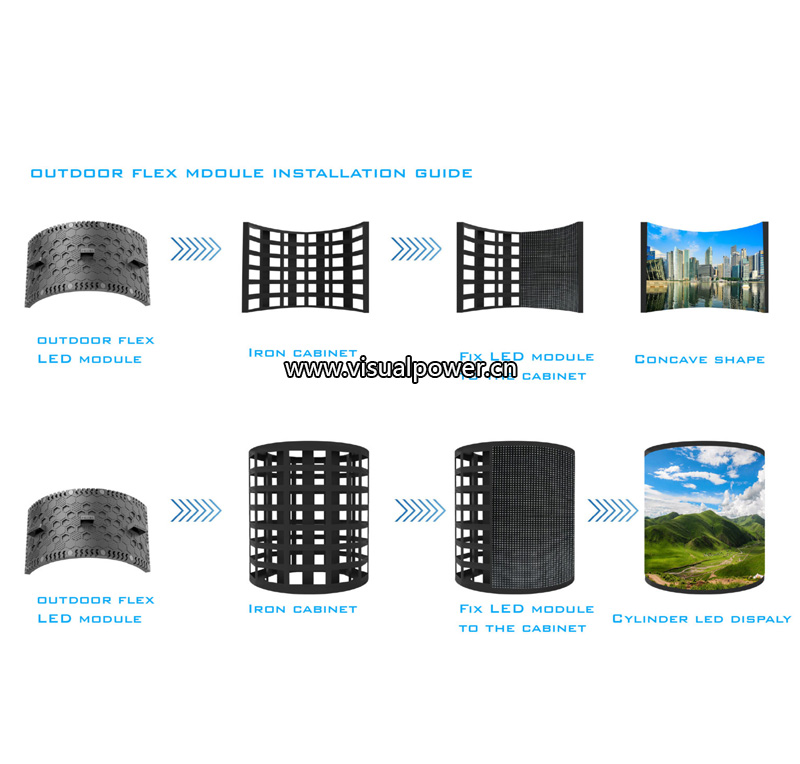Kategorien
- News (42)
- Fallstudie (6)
I never thought that a display screen could bring such a degree of visual impact and creative freedom.
Before I personally participated in the installation of the first Flexible LED-Anzeige, I always thought it was not much different from traditional LED screens. After all, whether it’s bright or not, whether it’s clear or not, and whether the size is large enough, isn’t that all?
But when I stood in front of that display wall curved into a “wavy” Form, the shock almost made me forget that it was a technological product and more like a visual work of art. Since then, I have completely changed my view on this type of flexible LED screen and have begun to come into contact with the logic and application scenarios behind it more frequently.
So today, I don’t want to explain what it is with a bunch of terms or cold data. Instead, I want to let you truly understand through my own personal experience where the strength of Flexible LED display lies, who it is suitable for, and what pitfalls you might have overlooked.

It’s a bit sudden. That project was originally planned to use conventional LED modules to assemble a wall, but because the designer temporarily proposed “wanting to make it streamlined and arc-shaped”, the traditional screen immediately lost its appeal. No matter how good the resolution is, it cannot fit the structure.
So we replaced it with Flexible LED – the modules are like “soft shells”, and the back can be bent, sticking to the curved wall like tiling.
That was the first time I was fully involved in the entire process from selection, installation to commissioning. The process was not easy, but the result was surprisingly stunning. The smooth and curved screen effect without any picture tearing made the guests passing by subconsciously stop to take pictures as soon as they entered.
In diesem Moment, I suddenly realized that Flexible LED is not a technical “option”, but a revolution in design freedom.
When many people hear the word “Flexibel”, their first reaction is “Can it be rolled up?” oder “Can it be bent like paper at will?”
I have to tell you responsibly: It can indeed be bent, but not pulled randomly like a rubber band.
Generally speaking, the bending radius of flexible LED modules is between 60mm and 100mm, which can meet the common cylindrical, wavy and even spherical splicing requirements. But the prerequisite is that the installation structure must also keep up. If you want to stick it on a wavy wall, the corresponding curvature of the wall bracket itself should be preset in advance.
Gentleness is gentleness, but not magic.

After so many projects, I can responsibly say that in the following scenarios, Flexible LED display is the “chosen one” :
Architectural facade design: especially for walls with rounded corners and irregular structures;
Auto show/Art installation/Brand flash mob: Es ist notwendig, die größte Aufmerksamkeit innerhalb eines begrenzten Raums zu erregen.
High-End-Einkaufszentren, Flughäfen, Hotels und andere öffentliche Bereiche: Eine immersive Atmosphäre schaffen “Technologie + Kunst”;
Museen/Wissenschafts- und Technologiemuseen: Kurvierte Display -Bildschirme können natürlicher in die Formen der Exponate passen, Verbesserung der Erfahrung.
Ein interessanter Punkt ist, dass es für vorübergehende Anzeigen oder disassembierbare Lösungen sehr geeignet ist. Viele flexible Strukturen, In Kombination mit magnetischer Installation, kann schnell zusammengebaut und zerlegt werden, significantly reducing the on-site construction intensity.
If you are really planning to use Flexible LED, be sure to listen to these pitfalls I have fallen into:
Module thickness and structural fit degree
Some manufacturers’ modules, although they claim to be “flexibel”, are actually too thick and cannot fit the structure at all – this not only affects the appearance but also the heat dissipation.
The problem of heat dissipation has been ignored
Due to the large bending Angle of flexible leds and the limited ventilation space, the heat dissipation system must be designed in advance. Otherwise, as it keeps shining, there will be color differences or even burning spots.
Maintenance cost
Although flexible leds look good, their later maintenance is not as easy as that of standard leds to “remove the mold and replace”. Once they are stuck too tightly, the repair is really very troublesome. My suggestion is: Be sure to keep the front maintenance channel, even if it’s just to save some working hours in the future.

Flexible LED display is just the carrier. What truly touches people is always the content itself. You can spend hundreds of thousands of yuan to install a curved high-definition screen, but if what is played is only low-quality videos with blurred pixels, it is undoubtedly a waste of investment.
I have met too many clients who, in pursuit of “showing off”, have neglected the quality of the content. To be honest, this approach won’t maintain its appeal for long. Rather than spending a budget on an “empty shell”, it’s better to put in some effort to polish a visual content that is emotional and rhythmic.
Don’t make the screen more dramatic than the story.
Flexible LED display brings not only technological breakthroughs, but also the freedom to implement creativity. It breaks the traditional “Platz” display boundary, making the way information is expressed more three-dimensional, fluid and concrete.
If you are a designer, a brand owner, or simply someone who has a pursuit of “technological aesthetics”, I sincerely suggest that you visit a truly high-quality flexible LED project.
After watching it, you will understand: Es stellt sich heraus, dass Displaybildschirme auch Emotionen haben können.
Wenn dieser Artikel Sie inspiriert, Sie können es jederzeit mit mir besprechen. Ich habe immer geglaubt, dass eine wirklich wertvolle Verbindung immer mit einem aufrichtigen Teilen beginnt.